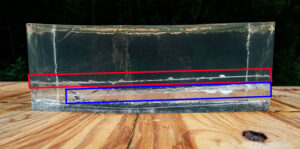
When it comes to concealed carry, selecting the right ammunition can be as crucial as choosing your firearm. Many new shooters, and even some seasoned ones, may not realize the key differences between training rounds and defensive rounds. Understanding why defensive rounds are essential for concealed carry could make all the difference in a real-world self-defense situation.
The Difference Between Training Rounds and Defensive Rounds
Training Rounds (FMJ – Full Metal Jacket): These are typically less expensive, designed for target practice and range use. They have a smooth, jacketed surface that allows them to penetrate targets easily but are less effective at transferring energy or stopping a threat quickly. FMJ rounds are great for honing your shooting skills but not ideal for self-defense.
Defensive Rounds (HP – Hollow Point): Specifically designed for personal protection, defensive rounds expand upon impact, creating a larger wound channel. This expansion increases the likelihood of stopping an attacker more effectively, as the round transfers more energy into the target and reduces the risk of over-penetration.
Why Defensive Rounds Are Critical for Concealed Carry
Stopping Power: In a life-threatening situation, stopping a threat quickly is your top priority. Defensive rounds, particularly hollow points, are engineered to expand upon impact, delivering more kinetic energy into the target. This creates a larger wound channel, which increases the chance of incapacitating the threat effectively. FMJ rounds, by contrast, tend to over-penetrate, meaning they may pass through the target without delivering enough stopping power.
Reduced Risk of Over-Penetration: One of the dangers of using FMJ rounds for self-defense is the risk of over-penetration. In a real-world scenario, you want to minimize the chance that a bullet could pass through an attacker and hit an unintended target, like a bystander.
 Defensive rounds are designed to expand and slow down on impact, reducing this risk significantly.
Defensive rounds are designed to expand and slow down on impact, reducing this risk significantly.Legal Considerations: In the event of a self-defense shooting, legal scrutiny often follows. Defensive rounds are seen as a responsible choice because they’re specifically designed for self-defense, reducing the chance of collateral damage. Using FMJ rounds in a self-defense scenario could raise questions about whether you took every precaution to protect bystanders.
Controlled Expansion for Maximum Effectiveness: Defensive rounds are designed to expand in soft tissue while maintaining their trajectory. This controlled expansion is vital for creating a more devastating impact, which is crucial in stopping an attacker quickly. FMJ rounds, on the other hand, tend to pass through targets with less damage, which can prolong the threat.
Training vs. Carry: Use the Right Round for Each
While defensive rounds are essential for self-defense, training rounds are still the best option for regular practice. They’re less expensive, allowing you to get more range time in and improve your shooting skills. However, it’s important to periodically train with your defensive rounds as well, so you’re familiar with their performance in your carry firearm.
Conclusion
When carrying a concealed firearm for self-defense, always load your gun with defensive rounds rather than training rounds. The ability to stop a threat quickly, minimize the risk of over-penetration, and ensure the effectiveness of your shots can make all the difference in a critical moment. While training rounds are great for practice, defensive rounds are specifically engineered for life-or-death situations. Be prepared, be safe, and carry the right ammunition for self-defense.
